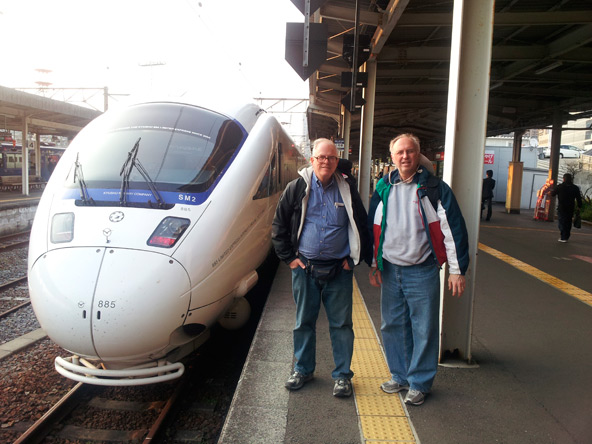
This is part three in a series of blogs from Dr. Asher’s trip to Japan.
The reasons for failure of the faith to grow in Japan is actually more complex than mere secularism. The Japanese government lifted persecution in 1873, but mostly because of pressure from the West, particularly the U.S. government, who bluntly told Japan that enlightened nations did not persecute people for religious beliefs.
So although freedom of religion was practiced in Japan, there was a certain disdain for Catholics, because of the past history of governmental censure and no doubt, the fact that the government lifted persecution under pressure, not out of conviction. But Japan had devout examples of Christianity, perhaps most notable in the 20th century was Dr. Takashi Nagai, a brilliant scientist, radiologist, and convert to Catholicism.
On Nov. 23, 1945, Dr. Nagai gave a talk for those killed in the atom bomb attack the previous Aug. 9. “A Song for Nagasaki,” by Fr. Paul Glynn, S.M. relates, “…Nagai knew what to say to bandaged, limping, burn-disfigured and demoralized Catholics who gathered beside the shattered cathedral to assist at the Requiem Mass for their dead.”
He noted the fact that the bomb had been destined for another city but clouds obscured it, so Nagasaki was chosen. Due to mechanical problems, the bomb was dropped very close to the cathedral. He went on, “Is there not a profound relationship between the annhilation of Nagasaki and the end of the war? Was not Nagasaki the chosen victim, the lamb without blemish, slain as a whole burnt offering on an altar of sacrifice, atoning for the sins of all nations during World War II?”
Some mourners reacted angrily, but came to understand. Nagai lost his wife and many people he loved in the attack. He was injured himself and radiation poisoning would have killed him but for a miraculous healing he attributed to the intercession of Fr. Maximilian Kolbe. Fr. Kolbe had lived six years in Nagasaki, establishing his Marian monthly as the most read Catholic publication in Japan. He had returned to Poland in 1936, and was subsequently martyred by the Nazis.
Dr. Nagai died of leukemia in 1951, but his influence on the nation was profound. Bedbound the last six years of his life, he wrote many books, and a movie was made of his life that was immensely popular in Japan, “Bells of Nagasaki.”
Alas, I suspect by now much of Dr. Nagai has been forgotten by a nation that is so competitive and eager for material well-being, a nation very much like us in so many unfortunate ways.
Tomorrow we visit the 26 Martyrs Museum, Fr. Kolbe’s still-maintained office, and the first Catholic church built after Commodore Perry forced Japan to open itself in 1853.





